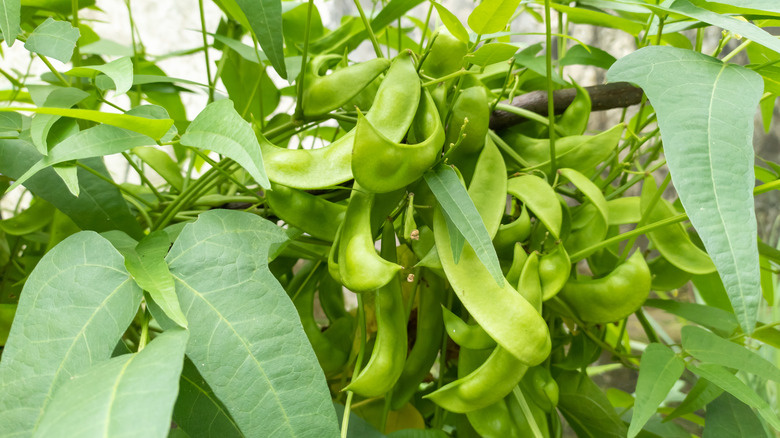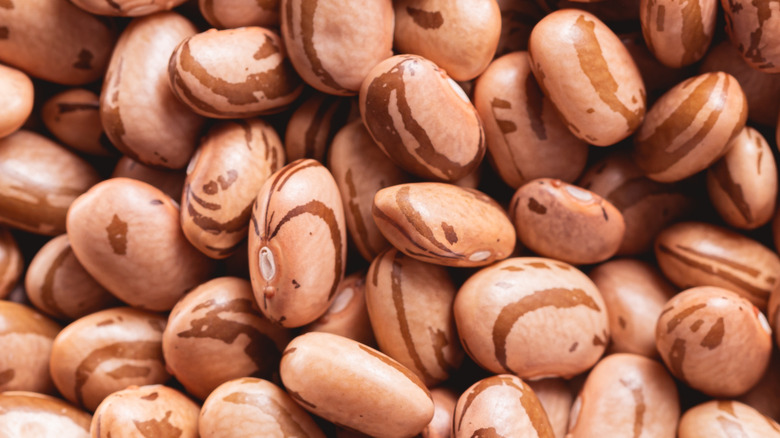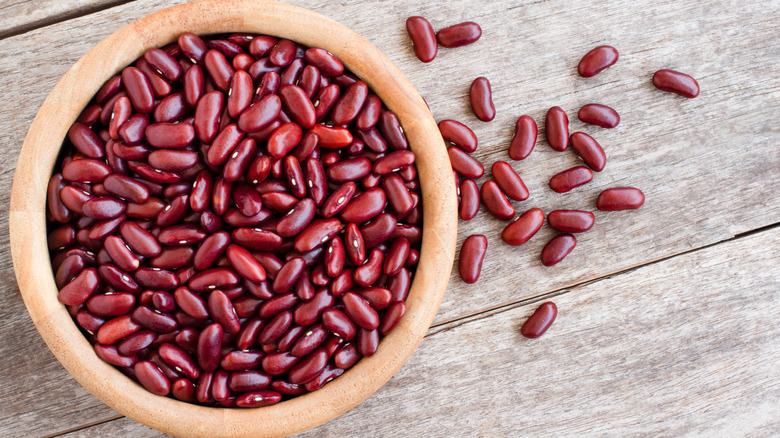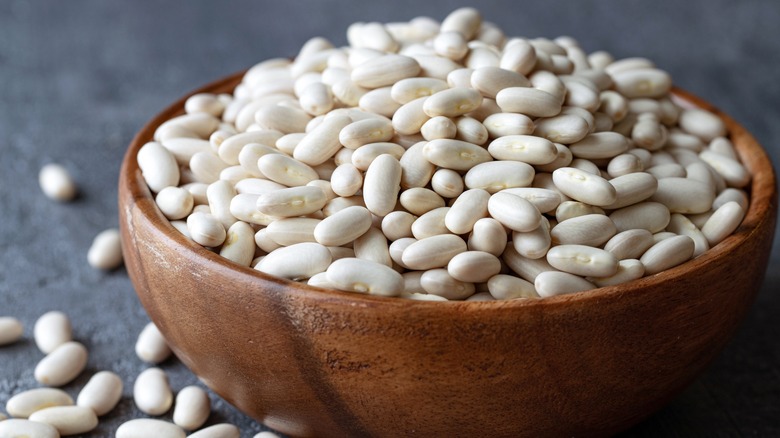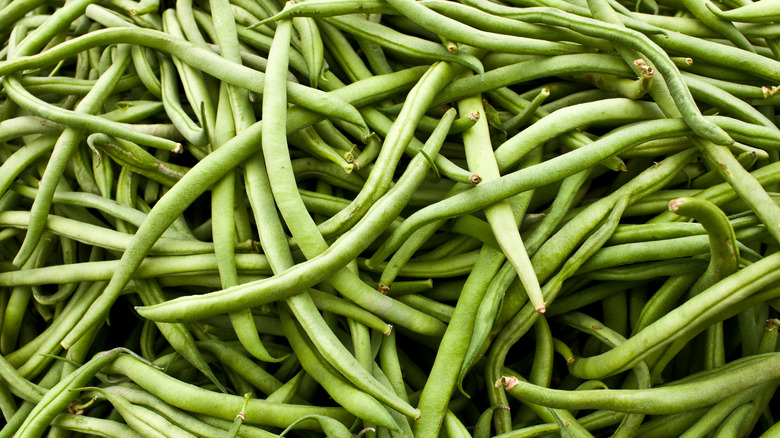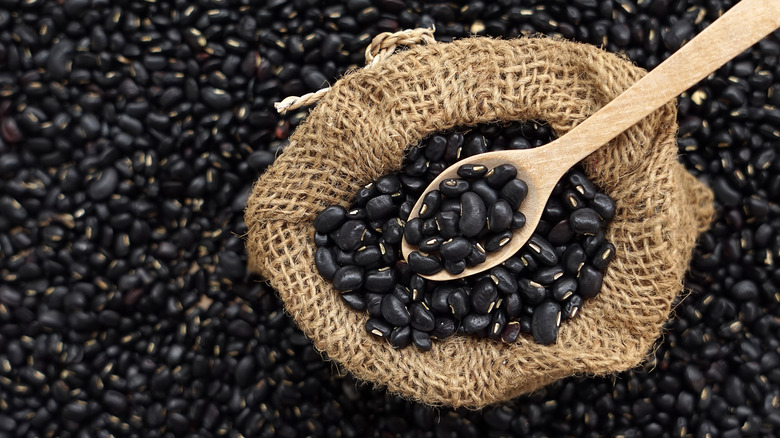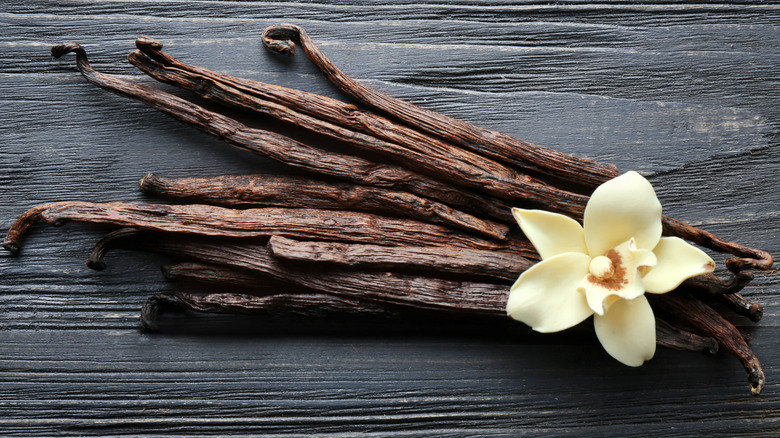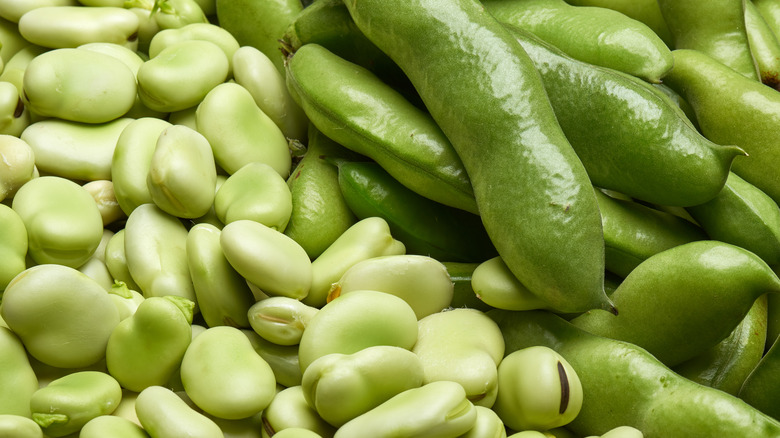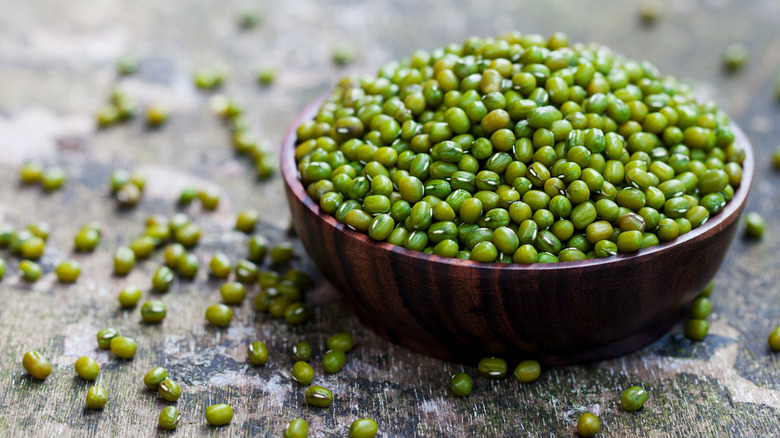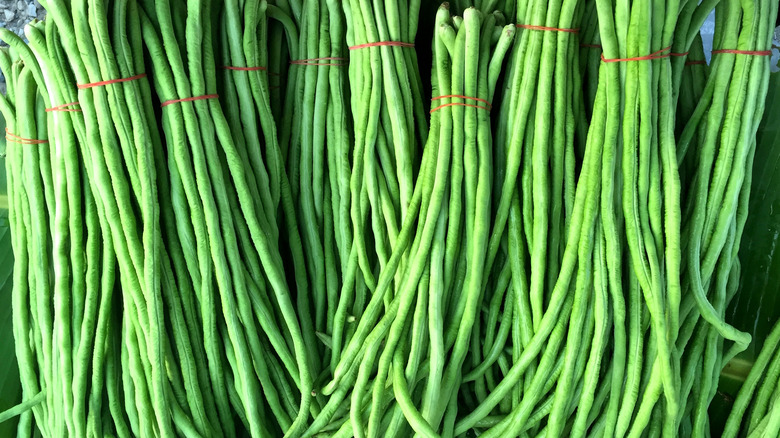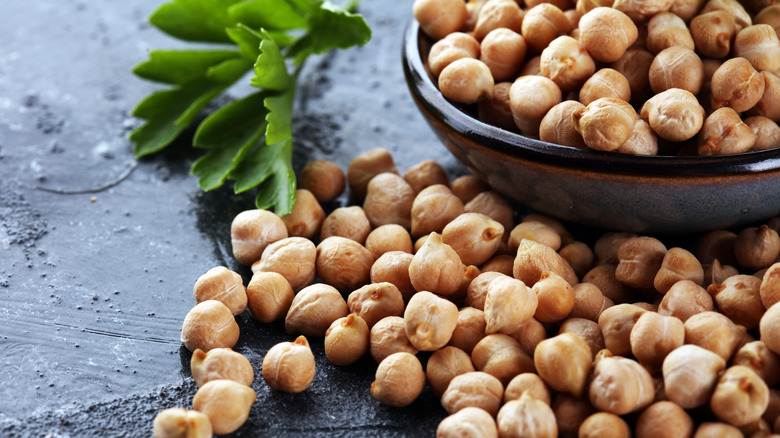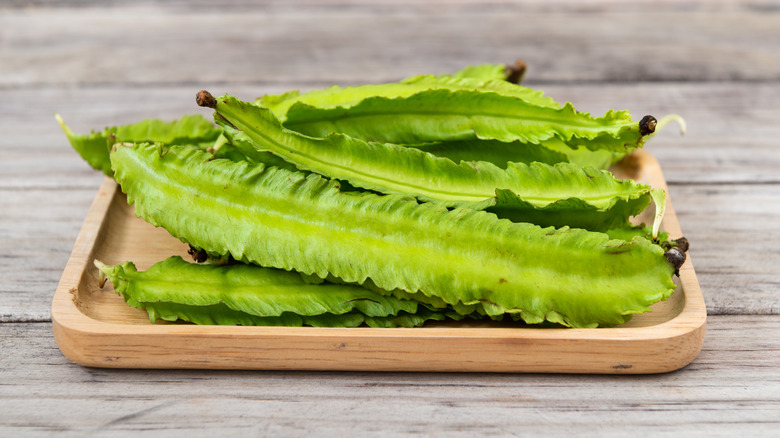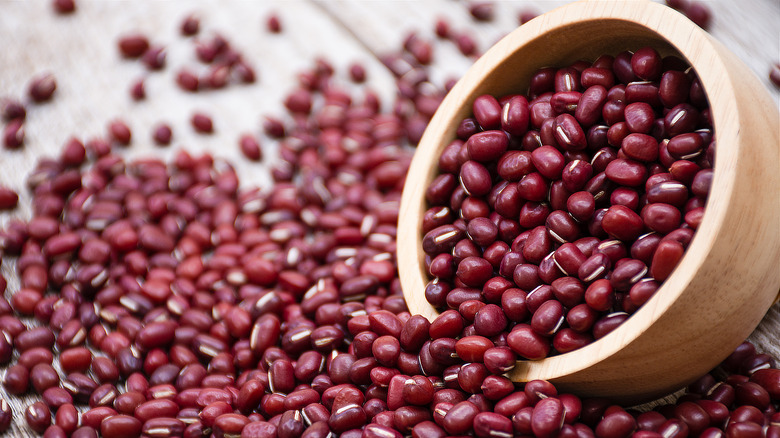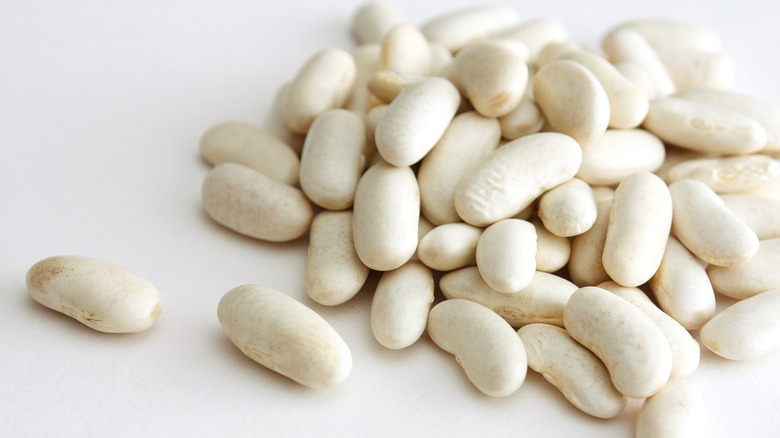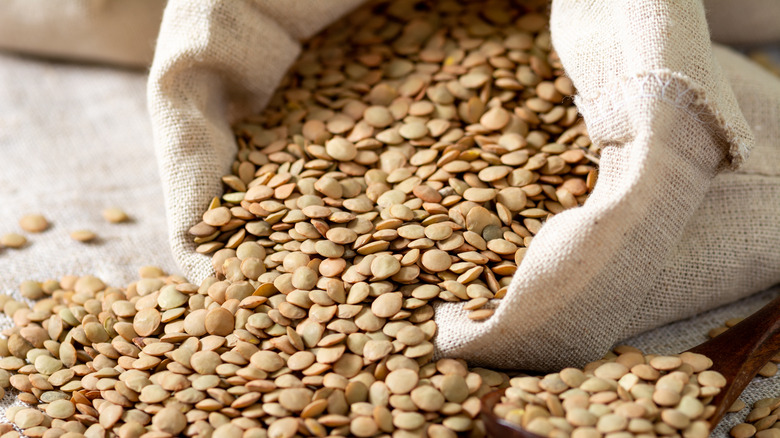15 Types Of Bean Plants That Are Easy To Grow
Growing your own produce garden can come in handy when you don't have time to go to the store or farmer's market. Additionally, growing bean plants can be a great first addition to your garden. They're perfect for folks who don't have the greenest thumb or for those who are first starting out, as bean plants are easy to grow and care for. They also provide great nutritional value when consumed, as they carry so much protein and can be used in various meals.
There are many varieties of bean plants you can grow in your home or garden, but the main two growing styles of beans are pole beans and bush beans, per Almanac. Pole beans grow as vines that can get to be more than 10 feet tall while bush beans grow closer together, reaching about 2 feet tall. Knowing how much space your garden can hold can help you decide which beans to start with.
1. Lima beans
Lima beans (Phaseolus Lunatus) are also referred to as butter beans and are grown from their flat-crescent oval shaped bean, according to HarvesttoTable. They can be grown as bush beans or pole beans depending on the size of the seed. To get the best from your lima bean seeds, plant them about two to three weeks before the last frost date.
Lima beans should be planted indoors at a temperature of 60 degrees Fahrenheit before moving outdoors where it reaches 70 to 80 degrees Fahrenheit. They also need at least 1 inch of water daily.
2. Pinto beans
Pinto beans (Phaseolus vulgaris pinto) are one of the most well-known beans folks are familiar with. Over one hundred million pounds of the dried bean is imported into Texas, according to Treehugger. They should be planted directly in the soil regardless of the length your growing season is, and they won't grow as needed if they're planted indoors first.
Pinto beans are best grown in the summer, when they can get six hours of sunlight, and need to be watered occasionally only when the roots are completely dry.
3. Kidney beans
Kidney beans (Phaseolus vulgaris) are related to black beans, pinto beans, and navy beans, according to Plant Instructions. They need to be spaced apart about 4 inches from each other if they're being grown as pole beans so that the vines can grow individually, or 8 inches apart for bush beans. Once the kidney beans start sprouting, you can place gardening mulch around the base so that it keeps their soil moist.
Best planted after spring, kidney beans need a lot of sunlight. They thrive in temperatures from 65 to 80 degrees Fahrenheit, and they should be watered sparingly in well-draining soil.
4. Navy beans
Navy beans (Phaseolus vulgaris) are pole beans that grow up to 12 inches long. They can be planted in mounds of five to six seeds, but keep the mounds at least 3 inches apart from the others, according to Garden Guides. They'll grow a few vines, so you can create a supportive trellis for the vines to climb as they grow.
When planting and growing your navy beans, make sure they're placed in an area where they will receive full sunlight, and water them with at least 1 inch of water daily in the mornings to prevent them from getting diseases.
5. Green beans
Green beans (Phaseolus vulgaris) can be grown as pole beans or bush beans depending on the amount of space in your garden. Even though they're green in color, they also come in purple, red, yellow, and streaked varieties, according to Almanac. If you decide to grow them as pole beans, make sure to have a supportive tripod for the vines to climb along so that they don't fall over. Growing them as bush beans requires less care since they'll grow about 2 feet from the ground.
Whichever way you decide to grow your green beans, they do require full exposure to sunlight and need to be watered daily to keep the soil moist.
6. Black beans
Black beans (Phaseolus vulgaris), just like green beans, can be grown as pole beans or bush beans. Heirloom Organics suggests when planting them as bush beans, spread out the seeds so that they don't overlap one another. They are best planted in containers with well-draining soil first in case there's a last snowfall, then they can be transplanted outdoors.
Black beans require at least six hours of direct sunlight and should be watered regularly until it starts to sprout, then you can water it occasionally.
7. Vanilla beans
Vanilla beans (Vanilla Planifolia) are native to Mexico and are one of the most highly-sought after spices, per Logee's. They thrive in humid conditions with warm moist soil; anything below 55 degrees Fahrenheit can delay their growth. They are a pole type of bean, so they need a trellis or supportive stake for their vines to grow upward.
Since they need warmer weather, vanilla beans require daily to partial sunlight exposure and should be watered regularly to keep their soil moist.
8. Fava beans
Fava beans (Vicia Faba) or broad beans can be planted in the cooler seasons, so folks can plant them in the late summer to early fall. While they're one of the cool-season crops, they can also be planted in the spring. They can tolerate temperatures from 41 to 80 degrees Fahrenheit, sometimes as low as 21 degrees Fahrenheit for a short period of time, according to The Spruce.
Fava beans will need up to six hours of direct sunlight, so they should be planted away from other plants that could potentially give them shade. They should have their soil moist at all times, so water them daily.
9. Mung beans
Planting mung beans (Vigna radiata) is a great summer activity. They take about 120 days to reach their peak, so they can be planted in late May or early June. Mung beans require warm soil at a temperature of 65 degrees Fahrenheit. They can grow up to 32 inches and produce 3-inch long black pods.
Mung beans need more sunlight than other beans — about 8 to 10 hours per day — and should be watered regularly to keep the soil moist, according to SFGate.
10. Yardlong beans
Yardlong beans (Vigna unguiculata ssp. Sesquipedalis) originated from the topical and subtropical regions of southeastern Asia and China, according to evergreenseeds. They can grow from 18 inches to 30 inches in length. This pole bean can withstand temperatures from 70 to 80 degrees Fahrenheit in dry and humid environments.
In order to prevent reducing their flowering and bean production, yard-long beans need full sun exposure of at least 6 hours and 1 inch of water each week.
11. Chickpeas
Chickpeas (Cicer arietinum), also known as garbanzo beans, grow as a bush plant up to 18 inches tall. They're grown in the cooler season and take longer to reach the harvesting stage. They should be planted in pots indoors first to get a head start at growing before the warm weather begins and they're transplanted outdoors.
When the chickpeas are moved outdoors, they should be planted where the sun will hit them directly, and they need to be watered regularly once they start flowering, per Harvest to Table.
12. Winged beans
Winged beans (Psophocarpus tetragonolobus) are also known as dragon beans, goa beans, and four angled beans, according to Pinetree Garden Seeds. They can be consumed whole unlike some other bean plants. They require hot and humid weather conditions, so before planting the seeds they need to be soaked in water for 24 hours.
Folks who live in Florida could be more successful at planting winged beans given the climate they live in, so they require direct sunlight and well-watered soil.
13. Adzuki beans
Adzuki beans (Vigna angularis) are grown in East Asia, Australia, and America, according to Balcony Garden Web. When planting, the soil should be at least 60 degrees Fahrenheit since they need a regular temperature of 60 to 90 degrees Fahrenheit. You could use black plastic to warm up the soil if it's too cold.
Unlike most beans, adzuki beans can tolerate some shade when they are outdoors, but will also need direct sunlight along with daily watering to keep their soil moist.
14. Great northern beans
Great northern beans (Phaseolus vulgaris "great northern") typically grow around 2 feet tall and produce about five inch pods that hold five to six seeds, according to Heirloom Organics. The seeds should be separated with at least four inches between them when planting and will need a supportive trellis. Great Northern beans need warmer temperatures, ideally reaching 70 to 80 degrees Fahrenheit.
Great northern beans need direct sunlight and should be watered frequently when the surface of the soil has dried out.
15. Lentils
Lentils (Lens culinaris) can be planted indoors then transplanted outdoors in the soil before spring arrives since they need cooler weather at 68 degrees Fahrenheit, according to Epic Gardening. When they're planted outdoors, they should be spaced about 1 inch apart from each other. Lentils need a supportive teepee or fence to hold their vines as they grow.
Lentils should be planted in an area where they'll receive direct sunlight and need to be watered daily to keep their soil moist.

